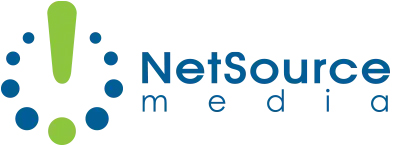Leverage the Customer Buying Cycle with Remarketing
Understanding the Customer Buying Cycle
The “Customer Buying Cycle” is a 5-stage journey in which consumer’s research, evaluate and purchase a product or commit to a service. For example, a person recognizes they would like to take a vacation, so they begin researching cruises, popular destinations, other excursions, etc. Throughout the research stage, this person forms a list of the most desired vacations and begins to evaluate which will be the most enjoyable experience. Finally, they decide to go on a cruise to the Caribbean with Carnival Cruises, buy their ticket and set sail to have fun in the sun. After the vacation, they reflect on the experience, what they liked, what they disliked and decide whether or not they would take a cruise again.
- Awareness: Recognizing a need or desire; such as wanting to take a vacation
- Interest: Searching for solutions to their need or desire; researching cruises & popular destinations
- Consideration: Evaluating each solution based on predetermined factors created by the consumer; such as the cost, amenities, destinations, etc. offered by Carnival and Royal Caribbean
- Purchase: The action of buying a product or service; deciding to go to the Caribbean on Carnival Cruises
- Delight: Final evaluation of the experience and whether to use the same product/service or try something different next time
Importance of the Evoked Set
A dealership needs to be present in all stages of the customer buying cycle, focusing on one stage will limit your advertising potential exponentially. The most important stage is awareness and research, simply because if they do not know of you, they cannot consider you. The main goal in these stages is build brand awareness and move into the evoked set, which is basically a group of businesses a customer looks at favorably and is most likely to purchase a product or service from.
For example, a consumer wants to buy a phone and researches the Apple IPhone, Samsung Galaxy, Motorola Droid, LG Phoenix, Microsoft Lumia, and the Google Pixel. After researching the brands and types of phones available, the consumer decides they like the features of the Samsung Galaxy, the popularity of the Apple IPhone, and the technological prowess of the Google Pixel. Even though the consumer is aware of Microsoft, Motorola and LG; Samsung, Apple and Google were the products to make it through the evaluation stage and created what we call the evoked set.
Remarketing your dealership
Remarketing is a highly effective form of advertising which allows a company to re-advertise to customers who’ve already interacted with their dealership. There are various methods of remarketing including: email and digital ads on platforms such as Google AdWords and AdRoll. During the Buying Cycle, remarketing opportunities begin building up during the Awareness and Research stages, after the first couple of interactions from customers, and comes to full fruition at the end of research leading into the Evaluation of Alternatives stage.
- Research: The RV Industry has a fairly long buying cycle (some reports suggest between 6 months and 24 months); thus, the research phase is considerably long. This stage involves more than just your dealership, a consumer will be researching: whether to buy a new or used RV; which brand, type, model, unit and floorplan to choose; which dealership to trust with financing and service; who has the lowest prices; who has the best offer; etc. During this stage, users will browse your inventory online, basically getting a feel for your business and what is offered. In this stage, we want to continually put ads in front of the customer when they search for RV related terms. The #1 goal is to build brand awareness, promote units and services and establish ourselves in the mind of the consumer.
- Evaluation of Alternatives: Once the research is complete and the consumer has decided on which RV they would like to buy, the next step is to establish your dealership within the evoked set. We do this by tuning up marketing efforts, continually serving a branded, tailored and consistent ad message that focuses on what makes your dealership different: better financing options, lower prices, lifetime warranties, service contracts, etc. Our main goal is to build enough trust and brand affinity to enter the evoked set and have customers follow up with unit inquiries, phone calls and in-person visits, leading them to the purchase decision.
- Purchase: In this stage, there is little room to snag a customer from the competition but continuing to target customers with branded ads promoting your unique selling points is a good practice.
- Post-Purchase: After a customer buys an RV, dealerships should look to drive repeat business through RV Service and RV Parts. It’s also an opportunity to promote a new brand, model line or service, and capture consumers looking for consignment and trade-in programs.
Measuring Remarketing Success
The impact of remarketing campaigns can be seen in both short term and long term goals. In short term, we can measure the impact of the remarketing campaign through: increase in number of leads, website visitors, and return users. Long term goals like Brand Awareness and impact on consumer evoked sets are harder to measure. The best way to measure long term success is to compare performance before the remarketing campaign to performance after the remarketing campaign started.

